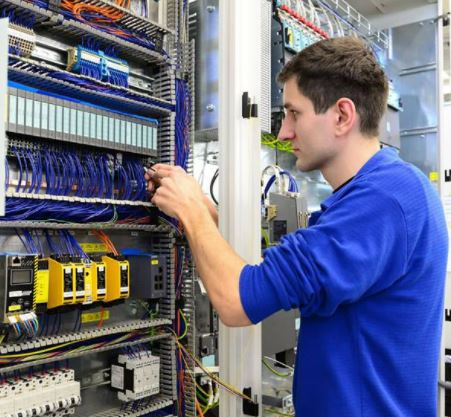What are the key characteristics of a good migration? The objectives are clear: a migration should increase the efficiency and availability of an automated plant and extend its useful life. There are two possible migration roadmaps. You either update installations by upgrading obsolete parts or you replace parts. This may involve one or several components within the automation systems.
End of life
‘End-of-life’ is the description used when a system is no longer supported by a software vendor. Sometimes the system can be made compatible again through upgrades. However, an end-of-life system may also be associated with issues that could potentially affect the production process. New software is often recommended to eliminate negative effects.
If a system extension is no longer possible, the installation no longer complies with legislation and support can no longer be guaranteed, so a full migration is required. This is of paramount importance to avoid downtime and combat steadily increasing maintenance costs.
Working with DWG
DWG’s unique plus point in relation to migrations is smooth collaboration between hardware and software specialists. DWG has extensive migration-related knowledge in both professional fields. Many DWG projects involve migration tasks and because we carry out projects at many companies, we also know that many companies are still working with systems that were purchased 20 years ago. Meaning that there is a need for new systems. A PLC has a technical life of about 15 years. However, because system vendors continuously invest in further development of their PLC solutions, the economic life of a PLC is much shorter than the technical life. Partly because of this, some types of system are phased out after a certain period. On the other hand, many old S5 systems, which were developed in the 1980s, are still in use. These systems continue to run in production environments because they can be maintained with parts that are still readily available.

Knowledge and experience in relation to new and old systems
When a factory needs to be expanded, you sometimes need a good knowledge of new and old systems. Due to ageing and the inflow of new, young people into the profession, having access to old system knowledge and the skills required to apply it can be a challenge. Systems today include many highly modern features and are capable of much more. One danger for companies is that they no longer know quite how their system works. So companies need to increasingly use platforms that are open. DWG helps with this. How? By employing a team of inspired engineers, both young and old!

The joy of working with DWG
The sore point associated with a migration is that it requires a significant investment but does not immediately yield a direct production gain. At DWG, we always go the extra mile to get the best result. We contribute our ideas and experience to ensure that customers improve their operating situation. For example, we are happy to share our knowledge relating to installation availability and production continuity.
Reasons for collaborating with DWG
– The partner who goes the extra mile to build long-term customer relationships;
– Suitable knowledge and experience for both small and large migration projects;
– Certified systems integrator, knowledge of various brands;
– We not only contribute expertise and experience relating to industrial automation, but we can also put our IT knowledge to good use;
– 24/7 service and
– We ensure proper preparation so that migrations and updates can be realised within the desired time frame to minimise unwanted downtime.
We are proud of our track record
Read our case studies for details of some of the migration projects we have completed over the years.
We have also written some entertaining blogs with a nostalgic twist and provide tips and tricks that you can consider in migration projects.



